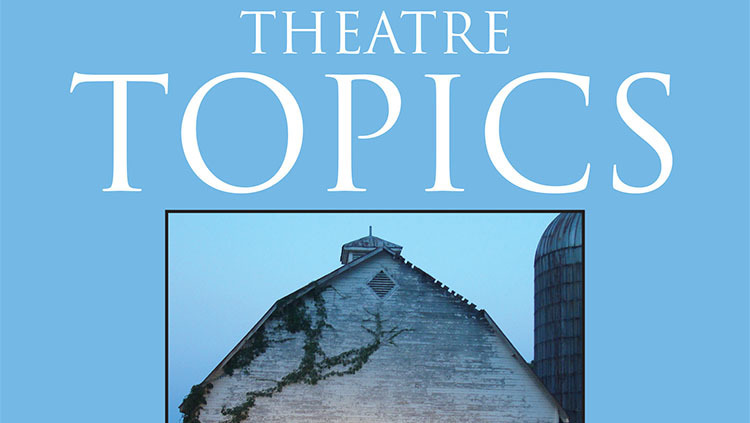The Location’s the Thing: Endstation Theatre and Dramaturgies of Place
Theatre Topics, 25.1 (collaboration with Angela Sweigart-Gallagher)
Opening excerpt
Early in the American classic Walden; or, Life in the Woods, Thoreau writes that “[i]t would be well perhaps if we were to spend more of our days and nights without any obstruction between us and the celestial bodies, if the poet did not speak so much from under a roof, or the saint dwell there so long. Birds,” he says, “do not sing in caves, nor do doves cherish their innocence in dovecots” (345). Thoreau’s words are more than simple musings, of course: the poet issues a direct challenge to his nineteenth-century readers. We might also say that Thoreau’s challenge echoes down the centuries; it resonates in a particularly poignant way in our own technology-savvy, social media–obsessed century. The poet’s words echo, as well, in another American classic: one from the first half of the twentieth century. Emily Webb, after she has painfully revisited her twelfth birthday, asks the stage manager of Our Town if “any human beings ever realize life while they live it.” His answer, after a pause, is: “The saints and poets, maybe—they do some” (Wilder 207). If Wilder proposes that a saint or a poet might truly realize life as he or she lives it, his vision must ideally be located, as Thoreau suggests, under the stars, and as we will suggest, in the hallowed ground of an outdoor performance space chosen, in part, for the way in which the place itself speaks to and through the text: that is, where holiness and poetry are coterminous. This essay is an attempt to answer Thoreau’s challenge and to further echo Wilder; it is a sketch of both sainthood and poetry, and it describes many evenings outdoors under Thoreau and Wilder’s celestial bodies. With a grounded perspective, however, this essay will also aim away from hagiography and toward praxis, in the direction of a practical, even radical dramaturgy of place.
What might we mean by the phrase dramaturgy of place? A definition can become clearer if first we note that by dramaturgy, we mean what Geoff Proehl has called “a play’s poetics or its physics, its nuts and bolts or its flesh and blood.” He further defines the term by referring to “what Mark Lord names when he writes that dramaturgy is the ‘intellectual mise-en-scène, the superstructure or the subconscious (depending on your intellectual heroes) of the idea-world of the theatre event as expressed in its shapes and in its rhythms, and in its affinities with our world’” (27). On the other hand, we intend the word place, following Edward Casey, as more than a descriptor of the general concept of space, but rather as a focused attention to actual location—or as Foucault would have it, emplacement. Casey argues in The Fate of Place that “[t]o be at all—to exist in any way—is to be somewhere, and to be somewhere is to be in some kind of place.” For him, “[p]lace is as requisite as the air we breathe, the ground on which we stand, the bodies we have. We are surrounded by places. We walk over and through them. We live in places, relate to others in them, die in them. Nothing we do is unplaced” (ix). Casey’s work asks us to move away from thinking in terms of the universality of space, instead turning our attention to the specificity that place can offer, to the power and influence of locations themselves.














Leave a Reply
Want to join the discussion?Feel free to contribute!